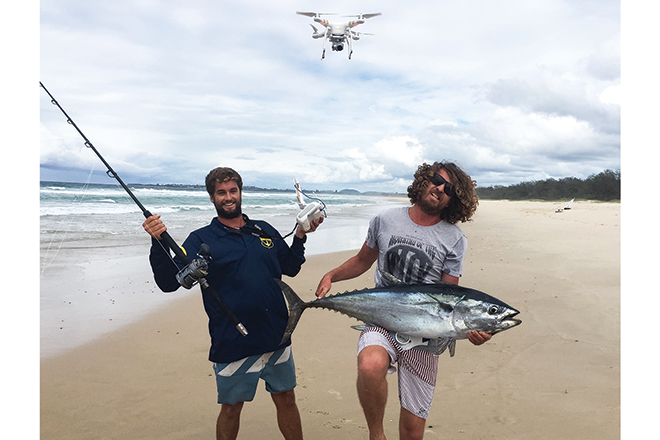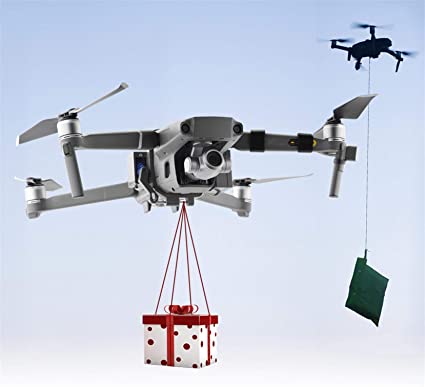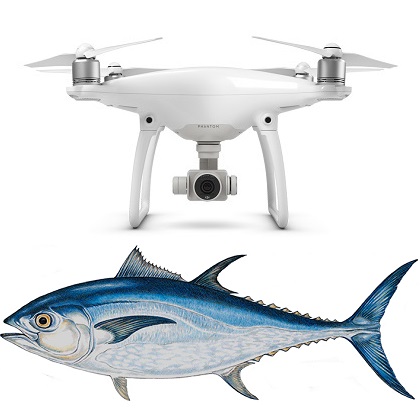
New Zealand has a new style of fishing: drone fishing. This innovative new technique uses drone technology to open up new fishing opportunities. If you are interested in purchasing a fishing drone, you can buy a DJI or Splash drone from leading retailers like Drone Fishing NZ. Splash drones, GoFish and custom-built fishing rods are also available.
Aerokontiki Drones
Sharkan makes the Fishhawk fishing drone, which captures a clearer picture of what you're doing. The stabilized camera of the drone can take 12-megapixel photos as well as 4k UHD videos at 30 frames per seconds. You can even view the videos on your smartphone. The drone can fly for up to 23 minutes and has a spare battery. It also has good transmission range.
Mobula
Mobula drones are specifically designed to fly in the water. The drone can survive in wind up to 20 kph and is buoyant. It also has built-in safety features, including automatic return to home, automatic payload release, and 3 different release mechanisms. It will also automatically return to water if it runs low on battery so you don't need to worry about losing it.
Banks'
The growing popularity of the fishing drone has caught the attention anglers, as well as other enthusiasts. A drone can present its own set of challenges. The drone is not recommended for fishing in shallow water. The second problem comes when a drone crashes twice in the same area. If this happens, the video information is not always reliable.

SplashDrone 4
Swellpro has designed the SplashDrone 4 with a brand new float platform for water sports and recreational purposes. It can be used to fish and other water activities. The drone is made of corrosion-resistant materials as well industrial-grade ABS to withstand harsh conditions. Smooth+ technology, which is a patented SplashDrone 4 flight control system, allows the user to have complete control of the drone. This helps it stay stable in any condition. The advanced technology of the SplashDrone 4 allows it to capture every angle from the sky and every moment.
Drone for Fisherman
You're in for a treat if you're a New Zealand Fisherman drone fisherman. Drone fishing enthusiasts prize snappers as a highly sought-after species. They are beautiful and tasty, making them a delight to catch. These fish can often be found off the coasts on the North or South islands. They are most common during their spring spawning season, which is when large numbers of them congregate. These fish can also be caught during the summer months as they are abundant in the autumn.
Flying a drone
To ensure your drone fishing trip in New Zealand is a success, you need to follow these guidelines. You must be familiar with the law. It is against the law to fly your drone over marine life, or within 500 metres of any marine mammal. It is important to pay attention to your surroundings while flying your drone. This will prevent your expensive drone from being confiscated.
A drone's payload
A drone can be used for fishing. However, you need to consider the payload. You will need to find a drone with a payload capacity to carry heavy fish and enough endurance to fly for a long time. If you are only going to fly your drone for just a few moments, you will probably not be able to catch enough fish. New Zealand's drone fishing technology is improving.

FAQ
What US states do drones are legal in?
It is legal to operate a drone as a hobby. The Federal Aviation Administration (FAA) has set up guidelines that allow people to use small unmanned aircraft systems (UASs). Before UASs can be flown, they must be registered with FAA. If certain conditions are met the FAA will allow commercial operators to fly these drones.
What are the laws around flying drones?
The Federal Aviation Administration (FAA), in the United States, regulates all aspects related to drone operations. The FAA must issue a certificate before you can commercially operate a drone. Then, you must complete a course in piloting skills and pass an exam. You will then need to pay an agency fee.
What are the rules and regulations for drones operation?
The FAA will require you to register your drone. You will need to submit information about your drone including its weight and size as well as operating frequency. You will also need to get an FAA identification number.
What type of batteries should a drone be using?
The majority of drones run on lithium-ion batteries. A typical drone uses between 3 and 6 volts.
Statistics
- According to ZipRecruiter, the minimum hourly wage of drone pilots is $20. (thedroneu.com)
- According to industry research from ZipRecruiter , there are 10 cities where the typical salary for a Drone Pilot job is above the national average. (dronesgator.com)
- With the top 10% making over $100/h and the bottom 10% making as low as $10/h. (dronesgator.com)
External Links
How To
How to Fly Drones for Beginners
A drone is a remote-controlled aircraft used for aerial photography, cinematography, surveillance, scientific research, and hobby purposes. The technology behind drones has been around since World War II. DJI's Phantom quadcopters became commercially available in 2010. There have been many drones made since then. These range from beginner-friendly drones like Parrot AR Drone 2.0 to more advanced multi-rotor craft like DJI Mavic Pro.
There are many ways to fly a drone.
-
Remote control: This uses a remote control device that attaches to your hand and allows you control the drone along its flight path. There are two main types of controllers: On/Off switches (like a radio) and joysticks.
-
Manual Control - This method uses a smartphone app to remotely control the drone using GPS coordinates. You must keep track of the location where you want the drone to go and follow the instructions from the app.
-
Autonomous Flight - This method involves leaving the piloting duties to the drone itself. It allows the drone to fly independently without any human intervention. The drone must be equipped with a camera and sensors that can capture images and data in order to fly autonomously.
-
Triggered Flight - This method is similar to manual control, except the pilot manually sets up a preprogrammed route, and the drone follows that route until it reaches the endpoint. The drone automatically lands once the route has been completed and returns to the base.
-
Landing Gear: Some drones have landing gear that allows them safely to land in case they lose power or run low on battery.
-
Goggles - Pilots may wear goggles to shield themselves from flying debris.
-
Camera – Some drones have cameras, which allow you to take photos or videos from up high.
-
Obstacles - Some drones can be equipped with obstacle avoidance systems that prevent them from crashing into obstacles.
-
Speed - Drones can reach speeds up to 40 mph.
-
Battery Life - Most drones last between 20 and 3 hours depending on how much power they have.
-
Distance - Some drones can travel up 30 miles depending on the model.
-
Power source: Some drones will require an external power source while others can be powered by internal batteries.
-
Weight - Some drones are lighter than others, while some models can weigh as much as 4 pounds.
-
Size - The size of drones varies from small, easily carried devices to more substantial crafts that weigh in excess of 50 pounds.
-
Price - All drones fall within a specific price range, from high-end models that can cost thousands of dollars to lower-cost options starting at $100.